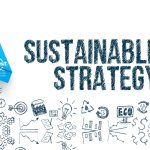Six Ways to Minimize Waste on Your Construction Site
As a construction professional, you know better than anyone that sustainable building practices are not just a passing trend. Over 30 cities, including Sacramento, Denver, and Atlanta require new buildings of a certain size to be built to LEED standards. As more and more cities adopt similar regulations for new construction, construction companies are going to be challenged to keep up. Thankfully, sustainable building practices don’t only mean better, more energy-efficient buildings – they can also save you time and money on your projects. Here are six ways to minimize waste on your construction sites that you can implement in 2019.
1. Emphasize landfill diversion from day one
From the beginning of any project, landfill diversion and sustainability should be an emphasis, not just a secondary aspect of a job. Give yourself the opportunity to set goals for meeting regulations. For many green building certification standards such as LEED, you’ll need to have measurable success for recycling and waste reduction, and that needs to be considered in every aspect of a project.
2. Plan accordingly
Just like you measure twice and cut once, planning a sustainable building project starts long before any of the work is actually done. A big percentage of construction site waste is generated simply by inefficient purchasing. When you waste less, you spend less – it’s that simple. Avoid using “template” buying practices, and instead, take the time to purchase specifically what you need for each individual project.
3. Organize your construction site
It’s amazing the difference that simple organization can make on a construction site. By grouping your recyclable and salvageable materials together, you can cut down on confusion and make your construction site more efficient. If time = money, efficiency means less money spent on re-doing work or having to sort materials after the fact.
4. Choose vendors wisely
If you have set sustainability goals for your construction project, you need to choose vendors that will support those goals. Choosing vendors that can handle the scale of your project and won’t slow you down is critical. It does you no good to sort recyclable materials for collection if the vendor you choose can’t empty those containers fast enough. Also, there are vendors that can offer a single-stream recycling option so you don’t have to do any pre-sorting of recyclable materials. While this option may be pricier, it will save you time and help you achieve your sustainability goals more efficiently. Make sure you take the time to shop around with multiple vendors so that your goal-specific needs are being met.
5. Recycle and re-use salvageable materials
On any given construction site there are always materials that you can recycle:
- Metal (Both ferrous and non-ferrous)
- Cardboard
- Paper
- Plastics
- Unpainted and Unstained Wood
- Window Glass
There are also materials that can be salvaged and re-used. Concrete, gravel, and other aggregates can be used for backfilling instead of having to purchase additional dirt. Drywall can be used for patching damage in the finishing stages of a project.You can also work with suppliers to buy back materials you don’t use, reduce packing materials, and find better ways to store materials to prevent damage. Every pound counts when it comes to landfill diversion, so these little steps all add up.
6. Track progress
All your work to reduce waste is meaningless if you can’t track your progress. This is where your vendors come back into play. Having the ability to measure how much waste is created, and how much is recycled is essential to tracking your landfill diversion rates. This seems like an obvious concept, but not all vendors are created equally. The regularity in which you check your progress is important as well. You can’t ignore your waste and recycling programs throughout half of your project and then expect to change them at the end. Rather, pay close attention throughout the progress of your project and make adjustments accordingly. 2019 will be another strong year for the construction industry, and keeping you at the top of your game is always a priority. Green building practices help you stay compliant with local regulations, save time and money, and in the end build a better building. These six attainable ways to reduce waste on your construction sites will help lead to a successful, prosperous, and headache-free 2019.
This article was originally published on ForConstructionPros.com









